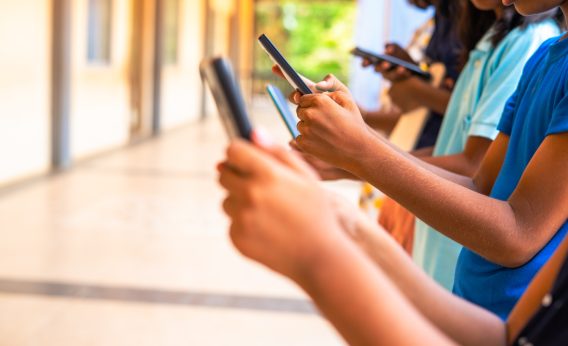APA Releases New Recommendations for Children’s Social Media Use
Editors carefully fact-check all Consumer Notice, LLC content for accuracy and quality.
Consumer Notice, LLC has a stringent fact-checking process. It starts with our strict sourcing guidelines.
We only gather information from credible sources. This includes peer-reviewed medical journals, reputable media outlets, government reports, court records and interviews with qualified experts.

For the first time in its history, the American Psychological Association has released a health advisory on adolescent social media use. The organization took a closer look at how something designed for adults can potentially harm children.
What Parents Need to Know
The American Psychological Association said social networks are “not inherently beneficial or harmful to young people,” but should be used thoughtfully.
According to the APA, parents and caregivers play a key role in keeping their children safe when they use social media. Knowing a child’s strengths and weaknesses better enables adults to help their children avoid potential harm.
The APA said its findings may not apply equally to every child. Social media experiences will vary, and parents need to make sure all decisions are tailored for each individual child and family.
Ensuring Healthy Socialization
Communicating with friends on social media can be beneficial for a child’s developing brain, according to the APA. Keeping in touch with friends can also help nurture social and relationship skills.
Children dealing with anxiety, depression or loneliness may benefit the most from social interactions online. However, since children’s brains aren’t fully developed, aspects of social media such as the “like” button, the use of artificial intelligence to promote excessive scrolling and the desire for attention from peers can all be problematic.
Areas of the brain important for self-control also won’t fully develop until early adulthood. Parents and guardians should consider putting limits on social media platforms that encourage excessive use.
Keeping Close Tabs on Usage
The APA suggests parents and guardians take a multifaceted approach with their children’s social media use that includes:
- Ongoing discussions
- Parental monitoring
- Supervision
- Time limits
Unsupervised social media use has a higher risk of exposing children to harmful content. Keep an open dialogue with children about what they’re seeing on social media. Challenge them to answer hypothetical questions for a better understanding of how they may respond to certain situations online.
Research shows children’s social media traits can be influenced by their parents’ online behaviors. Parents should make sure all conversations concerning social media reflect how they want children to feel about social media use. Taking social media holidays as a family is one way to open up more discussion about the challenges associated with abstaining from social media for a long period of time.
Watching for Problematic Use
Social media lawsuits have been filed against online platforms such as Facebook and TikTok over possible mental health issues in adolescents. There are warning signs to be aware of if children are using social media in unhealthy ways.
The APA noted that social media use may become a problem if children are:
- Choosing social media instead of face-to-face interactions.
- Having a strong need to constantly check social media.
- Ignoring daily routines and commitments.
- Losing sleep.
- Lying or using deceptive behavior to spend time online.
- Missing out on physical activity.
- Using social media despite expressing a desire to stop.
Any of these problems could require new social media limits be enforced. A mental health professional may also be needed to guide children through social media challenges.
Cyberhate Warning
Research shows that bullying and harassment online can have a more severe effect compared to similar issues offline. This can be damaging to a child’s psychological development and pose a greater mental health risk, according to the APA.
Adolescents also need to be trained to recognize racist online messages and posts. The APA’s research found that young people who are prepared to deal with racism online are better able to avoid mental trauma when confronted with it on social media.